Public - Key cryptography
Shortcomings:
Key Distribution Problem
Number of Keys: n(n-1)/2
No Protection Against Cheating by Alice or Bob
(nonrepudiation)

Trang 1
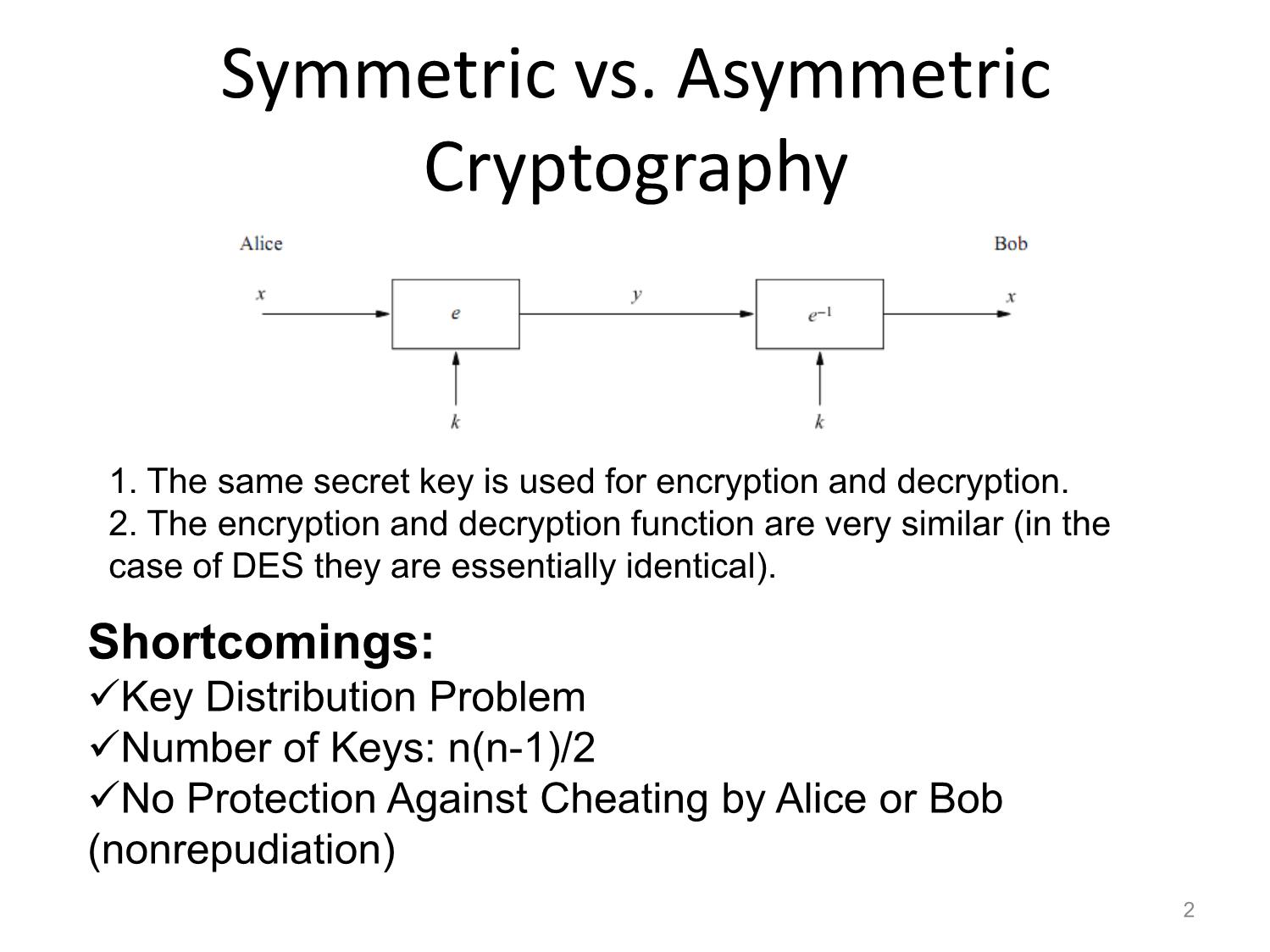
Trang 2
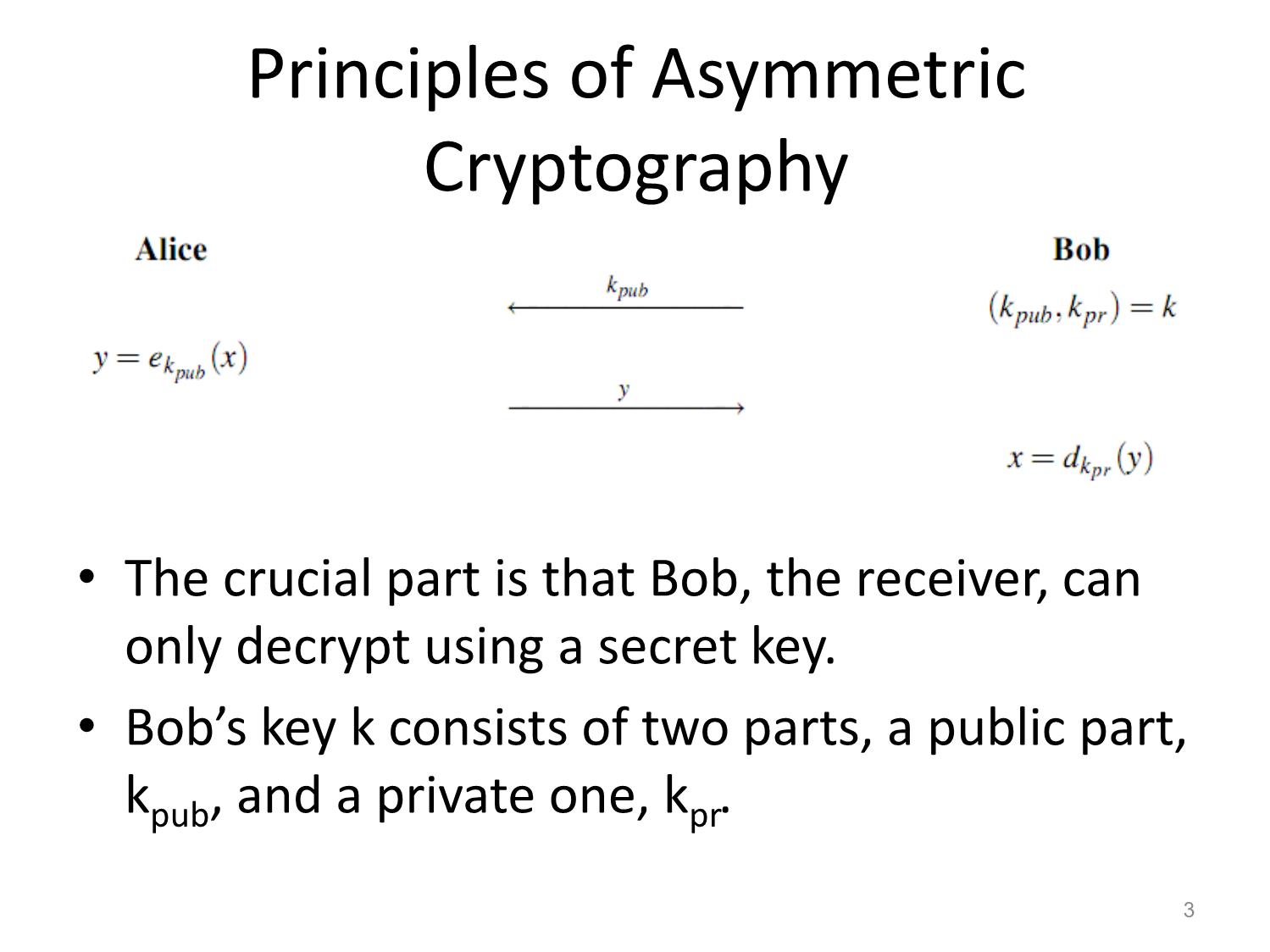
Trang 3

Trang 4
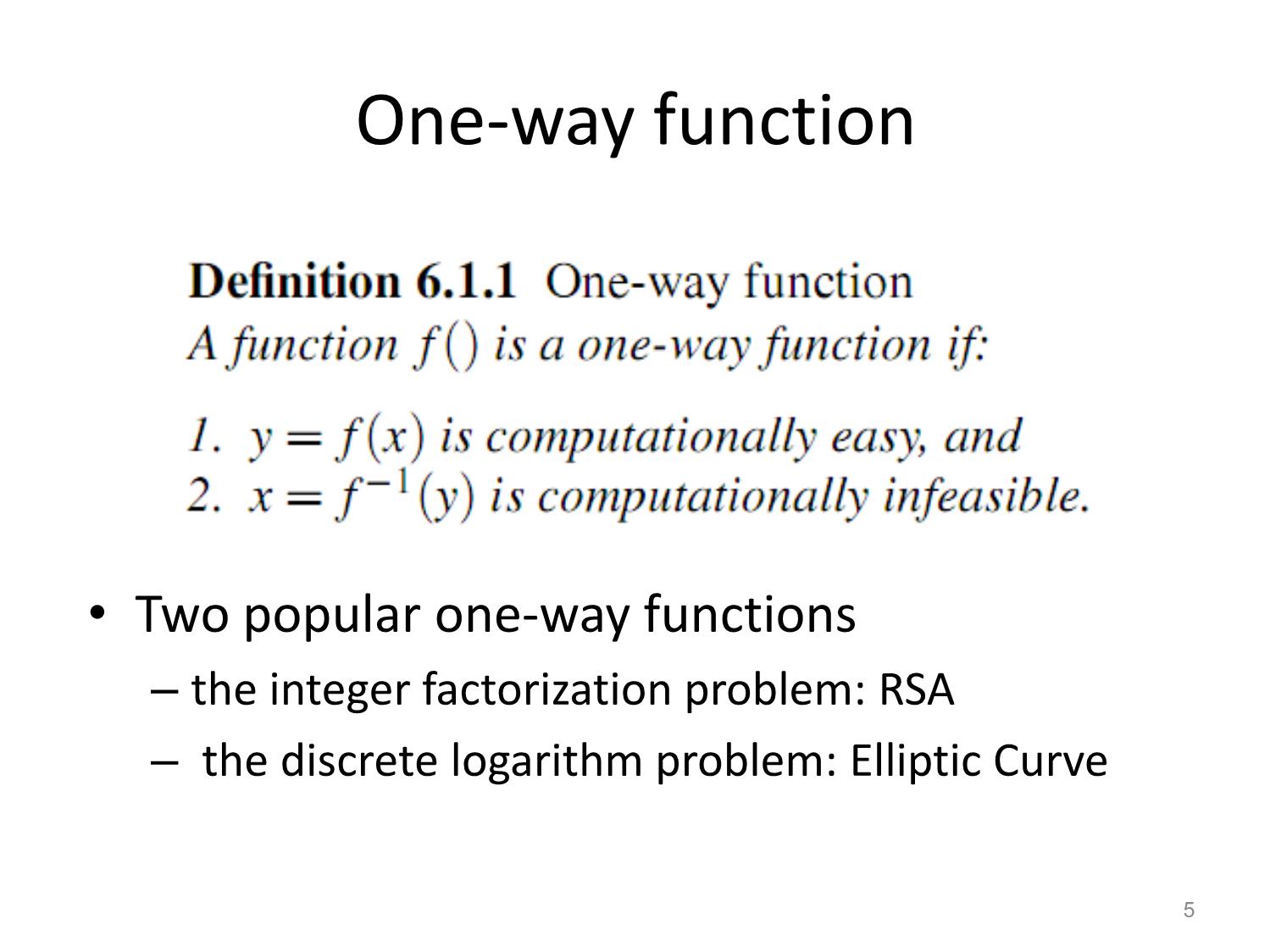
Trang 5
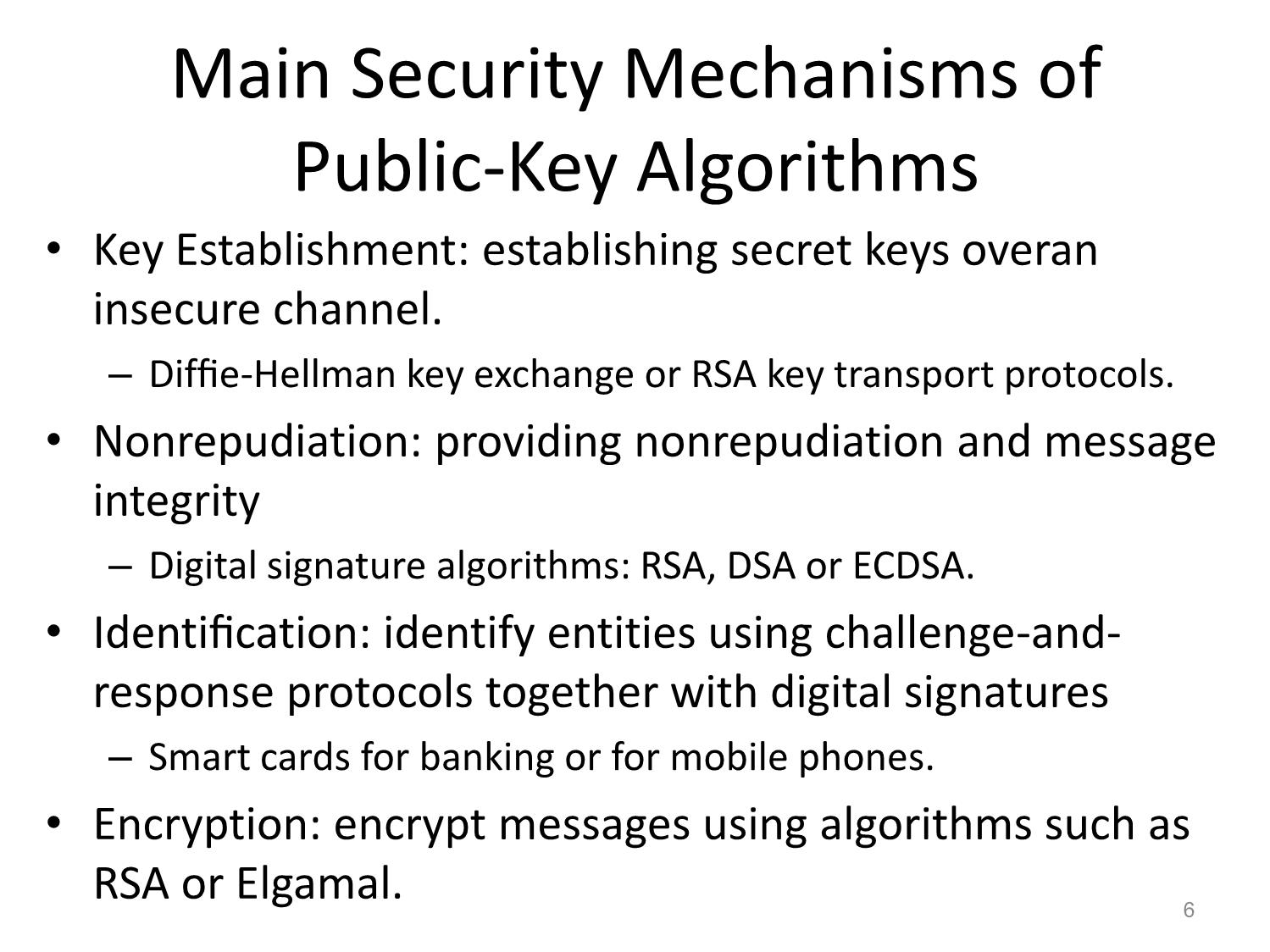
Trang 6
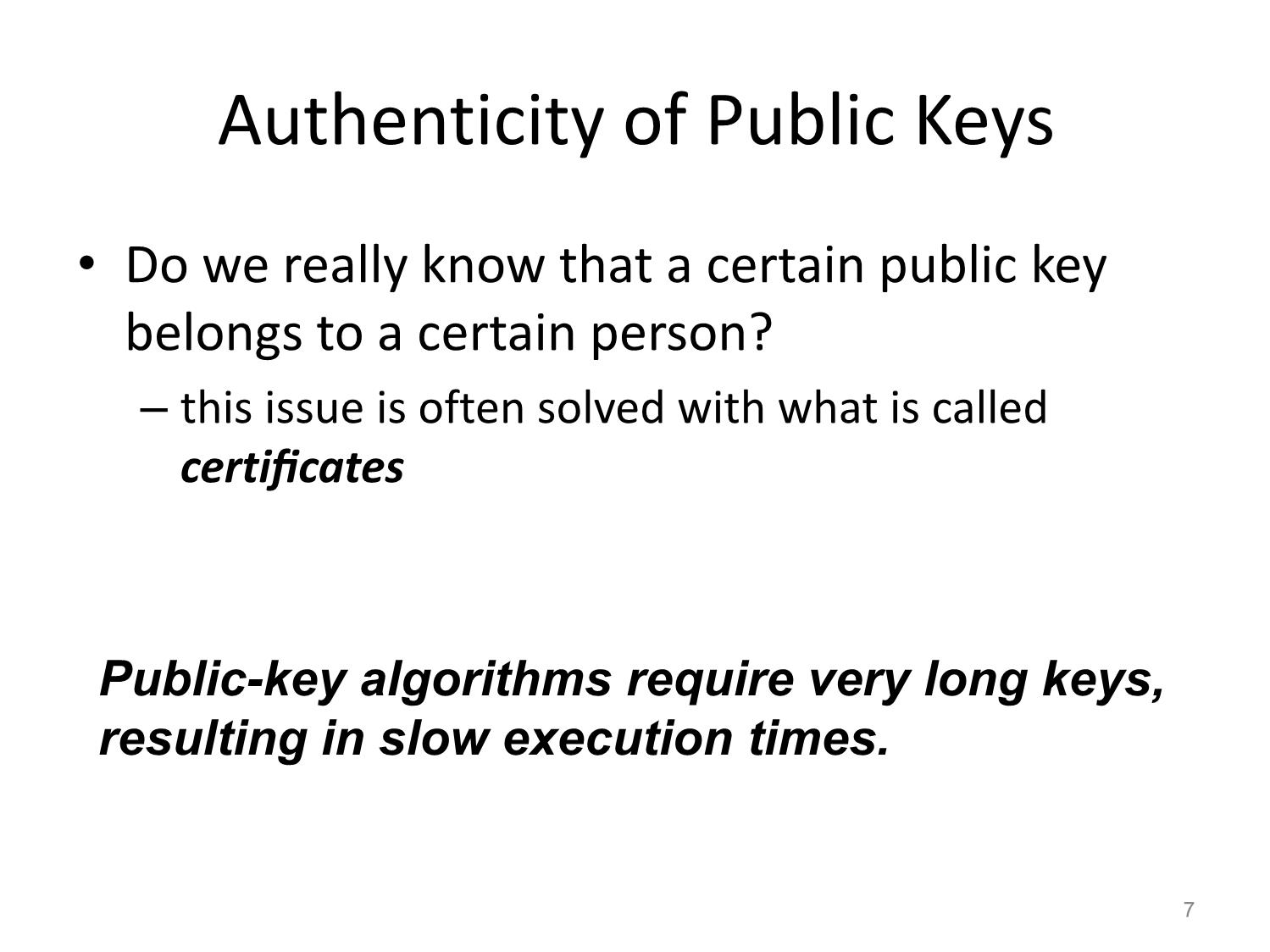
Trang 7
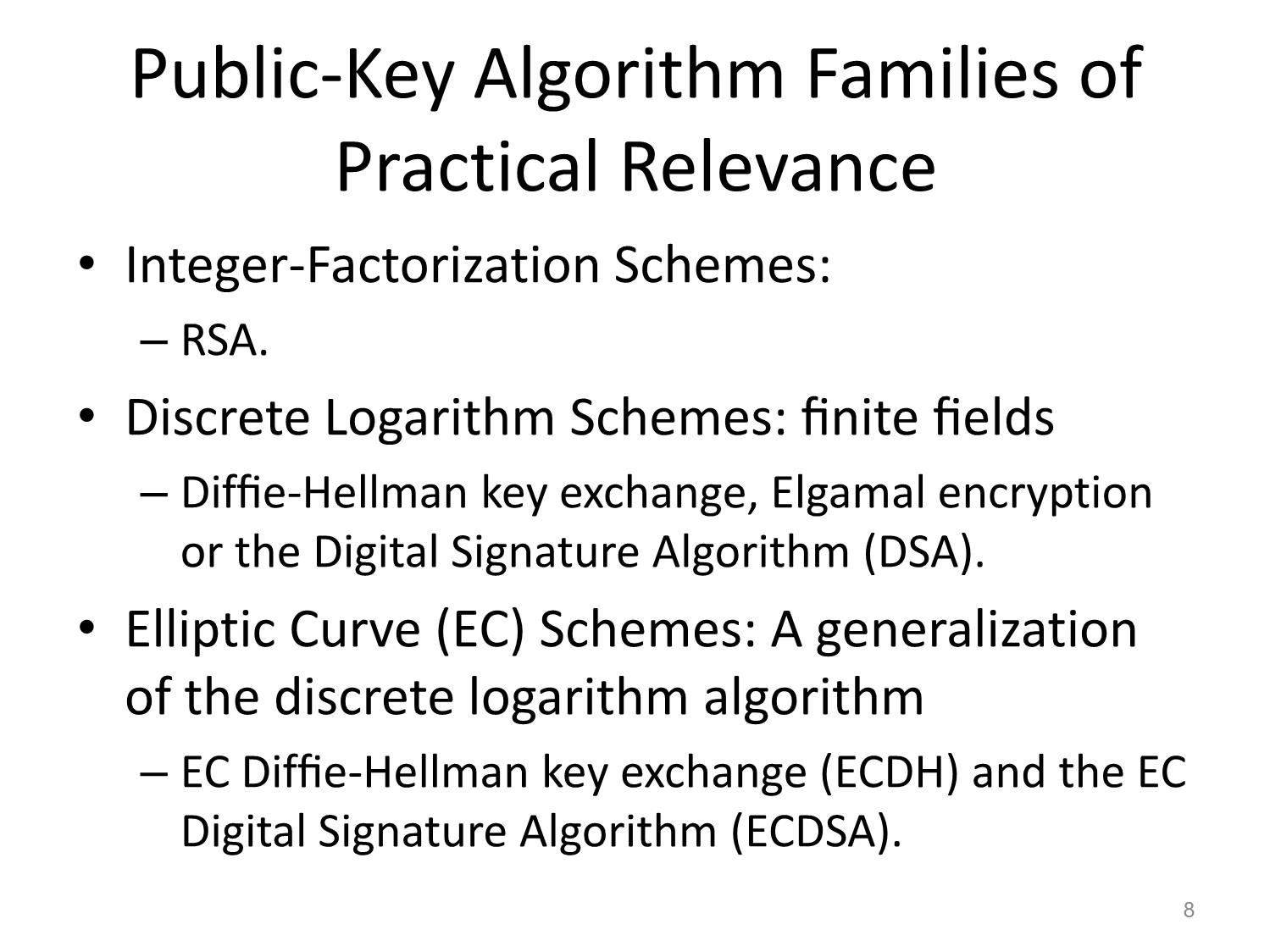
Trang 8
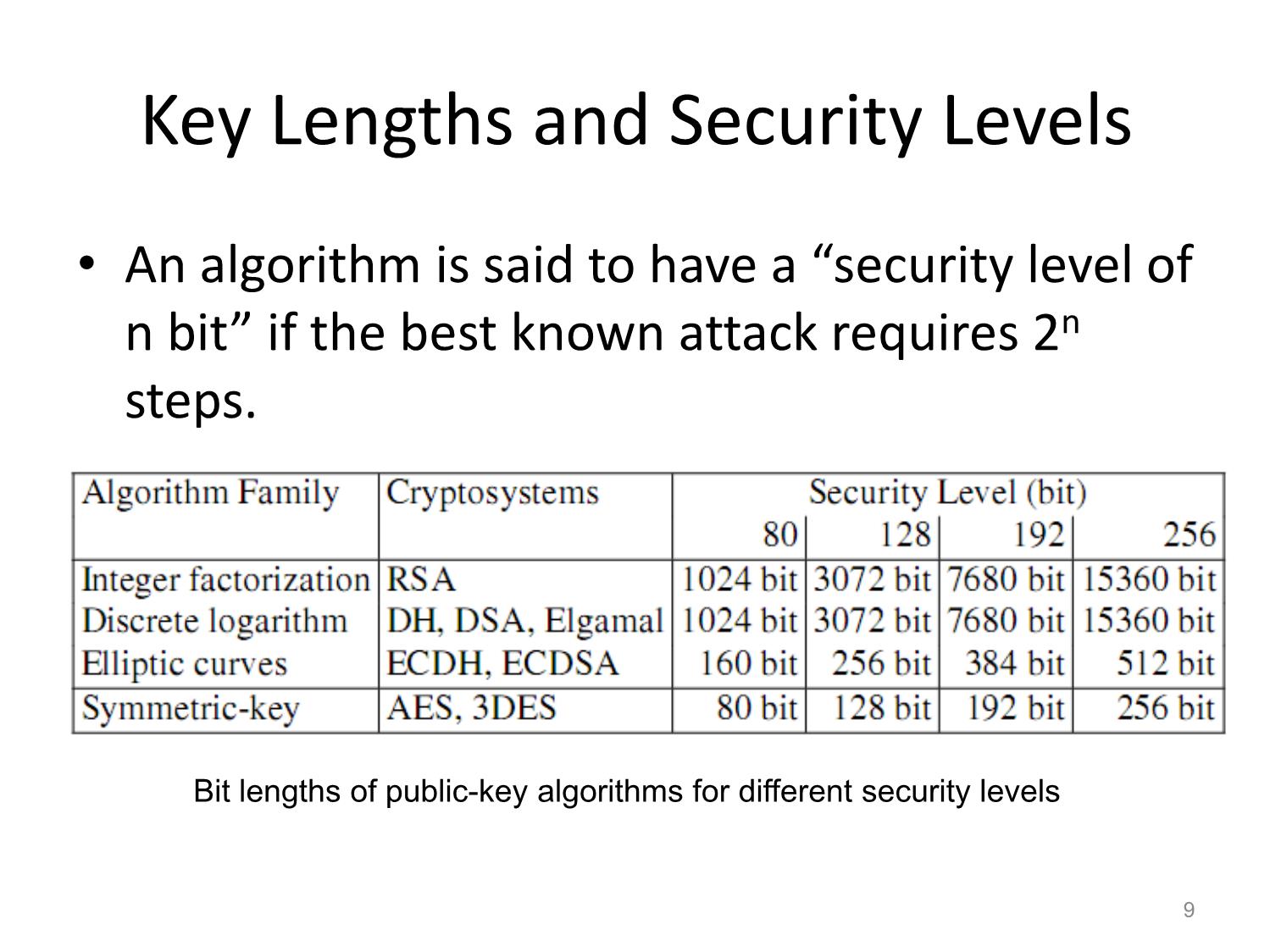
Trang 9

Trang 10
Tải về để xem bản đầy đủ
Bạn đang xem 10 trang mẫu của tài liệu "Public - Key cryptography", để tải tài liệu gốc về máy hãy click vào nút Download ở trên
Tóm tắt nội dung tài liệu: Public - Key cryptography

Public-Key Cryptography Huỳnh Trọng Thưa htthua@ptithcm.edu.vn Symmetric vs. Asymmetric Cryptography 2 1. The same secret key is used for encryption and decryption. 2. The encryption and decryption function are very similar (in the case of DES they are essentially identical). Shortcomings: Key Distribution Problem Number of Keys: n(n-1)/2 No Protection Against Cheating by Alice or Bob (nonrepudiation) Principles of Asymmetric Cryptography • The crucial part is that Bob, the receiver, can only decrypt using a secret key. • Bob’s key k consists of two parts, a public part, kpub, and a private one, kpr. 3 Basic key transport protocol with AES as an example of a symmetric cipher 4 Asymmetric schemes of practical relevance are all built from one common principle, the one-way function. One-way function • Two popular one-way functions – the integer factorization problem: RSA – the discrete logarithm problem: Elliptic Curve 5 Main Security Mechanisms of Public-Key Algorithms • Key Establishment: establishing secret keys overan insecure channel. – Diffie-Hellman key exchange or RSA key transport protocols. • Nonrepudiation: providing nonrepudiation and message integrity – Digital signature algorithms: RSA, DSA or ECDSA. • Identification: identify entities using challenge-and- response protocols together with digital signatures – Smart cards for banking or for mobile phones. • Encryption: encrypt messages using algorithms such as RSA or Elgamal. 6 Authenticity of Public Keys • Do we really know that a certain public key belongs to a certain person? – this issue is often solved with what is called certificates 7 Public-key algorithms require very long keys, resulting in slow execution times. Public-Key Algorithm Families of Practical Relevance • Integer-Factorization Schemes: – RSA. • Discrete Logarithm Schemes: finite fields – Diffie-Hellman key exchange, Elgamal encryption or the Digital Signature Algorithm (DSA). • Elliptic Curve (EC) Schemes: A generalization of the discrete logarithm algorithm – EC Diffie-Hellman key exchange (ECDH) and the EC Digital Signature Algorithm (ECDSA). 8 Key Lengths and Security Levels • An algorithm is said to have a “security level of n bit” if the best known attack requires 2n steps. 9 Bit lengths of public-key algorithms for different security levels Essential Number Theory for Public-Key Algorithms • Euclidean Algorithm (EA) • Extended Euclidean Algorithm (EEA) • Euler’s Phi Function • Fermat’s Little Theorem and Euler’s Theorem 10 Euclidean Algorithm • Greatest common divisor: gcd(r0, r1) • Ex: Let r0 = 84 and r1 = 30. Factoring yields r0 = 84 = 2 · 2 · 3 · 7 r1 = 30 = 2 · 3 · 5 • The gcd is the product of all common prime factors: 2 · 3 = 6 = gcd(30,84) 11 Euclidean Algorithm (cont.) • gcd(r0, r1)= gcd(r0 −r1, r1) • Ex: Again, let r0 = 84 and r1 = 30. r0 −r1 = 54 = 2 · 3 · 3 · 3 r1 = 30 = 2 · 3 · 5 – The largest common factor still is 2 · 3 = 6 = gcd(30,54)= gcd(30,84). • gcd(r0, r1)= gcd(r0 −r1, r1)= gcd(r0 −2r1, r1)= ··· = gcd(r0 −mr1, r1) gcd(r0, r1)= gcd(r0 mod r1, r1) or gcd(r0, r1)= gcd(r1, r0 mod r1) gcd(r0, r1)= ··· = gcd(rl ,0)= rl. 12 Example 1 • Let r0 = 27 and r1 = 21 13 Example 2 • Let r0 = 973 and r1 = 301 14 Euclidean Algorithm 15 Extended Euclidean Algorithm • gcd(r0, r1)= s · r0 +t · r1 • the current remainder ri in every iteration: ri = si· r0 +ti· r1 • last iteration: rl = gcd(r0, r1)= sl · r0 +tl · r1 = s · r0 +t · r1 16 Example • r0 = 973 and r1 = 301 – qi−1 : integer quotient in every iteration 17 • gcd(973,301)= 7, s = 13 and t = −42. • The correctness can be verified by: gcd(973,301)= 7 =*13+973+*−42+301 = 12649−12642. Extended Euclidean Algorithm 18 Applying EEA • Compute the inverse of r1 mod r0 where r1 < r0. • The inverse only exists if gcd(r0, r1)=1. – Apply the EEA, we obtain s·r0+t ·r1 =1=gcd(r0, r1). 19 • t itself is the inverse of r1: Example • compute 12−1 mod 67 • 12 and 67 are relatively prime, i.e., gcd(67,12)= 1. • Apply the EEA, we obtain the coefficients s and t in gcd(67,12)=1=s ·67+t ·12. • Starting with the values r0 =67 and r1 =12, – Linear combination: −5 · 67+28 · 12 = 1 – The inverse of 12: 12−1 ≡ 28 mod 67. – Be verified: 28 · 12 = 336 ≡ 1 mod 67. 20 EEA in Galois fields • computes the auxiliary polynomials s(x) and t(x), as well as the greatest common divisor gcd(P(x),A(x)) such that: s(x)P(x)+t(x)A(x)= gcd(P(x),A(x)) = 1 • P(x) is irreducible, the gcd is always equal to 1: s(x)0+t(x)A(x) ≡ 1 mod P(x) t(x) ≡ A−1(x) mod P(x) 21 Example • The inverse of A(x)= x2 in the finite field GF(23) with P(x)= x3 +x+1. The initial values for the t(x) polynomial are: t0(x)= 0, t1(x)= 1 22 • Check: since x3 ≡ x+1 mod P(x) and x4 ≡ x2 +x mod P(x): Euler’s Phi Function 23 Euler’s Phi Function (cont.) 24 Fermat’s Little Theorem and Euler’s Theorem 25 Euler’s Theorem 26 RSA Cryptosystem • Rivest–Shamir–Adleman algorithm • Applications: – encryption of small pieces of data, especially for key transport – digital signatures for digital certificates on the Internet • Euler’s theorem and Euler’s phi function play important roles in RSA. 27 Encryption and Decryption 28 In practice, x, y, n and d are very long numbers, usually 1024 bit long or more. Key Generation 29 Computation of the keys d and e • We apply the EEA with the input parameters n and e and obtain the relationship: • One often starts by first selecting a public parameter e in the range 0<e<Φ(n). The value e must satisfy the condition gcd(e,Φ(n)) = 1. • If gcd(e,Φ(n)) = 1, we know that e is a valid public key. • Moreover, parameter t computed by the EEA is the inverse of e, and thus: 30 Why t is the inverse of e: Analysis 31 apply the EEA, we obtain: The inverse only exists if gcd(r0, r1)=1 modulo r0 we obtain: Thus, t itself is the inverse of r1: Ex: compute inverse a−1 mod m, using EEA • compute 12−1 mod 67. The values 12 and 67 are relatively prime, i.e., gcd(67,12)= 1. If we apply the EEA, we obtain the coefficients s and t in gcd(67,12)=1=s·67+t·12. Starting with the values r0 =67 and r1 =12. 32 −5 · 67+28 · 12 = 1 inverse of 12 :12−1≡ 28 mod 67. Veriy: 28 · 12 = 336 ≡ 1 mod 67. Simple Ex of RSA 33 The private and public exponents fulfill the condition e ·d = 3 ·7 ≡1mod Φ(n). Practical RSA parameters are much, much larger 34 Proof of RSA 35 Proof of RSA (cont.) 36 Proof of RSA (cont.) 37 Encryption and Decryption: Fast Exponentiation 38 The exponents e and d are in general very large numbers (1024–3072 bit or even larger). require around 21024 or more multiplications. Fast Exponentiation: Analysis • Ex1: compute the simple exponentiation x8: 39 can do something faster: • Ex2: compute x26: Two basic operations: 1. squaring the current result, 2. multiplying the current result by the base element x. Square-and-multiply algorithm • The algorithm is based on scanning the bit of the exponent from the left (MSB) to the right (LSB). • In every iteration, i.e., for every exponent bit, the current result is squared. • If and only if the currently scanned exponent bit has the value 1, a multiplication of the current result by x is executed following the squaring. 40 Ex of Square-and-multiply algorithm 41 Speed-up Techniques for RSA • Fast Encryption with Short Public Exponents – Square-and-multiply algorithm • Fast Decryption with the Chinese Remainder Theorem (CRT) – Idea of the CRT: rather than doing arithmetic with one “long” modulus n, we do two individual exponentiations modulo the two “short” primes p and q. (n=p.q) 42 Fast Encryption with Short Public Exponents • The public key e can be chosen to be a very small value. • In practice: e = 3, e = 17 and e = 216 +1 43 Complexity of RSA exponentiation with short public exponents Fast Decryption with the Chinese Remainder Theorem • Step1: Transformation of the Input into the CRT Domain – reduce the base element x modulo the two factors p and q of the modulus n, and obtain what is called the modular representation of x. 44 Fast Decryption with the Chinese Remainder Theorem (cont.) • Step 2: Exponentiation in the CRT Domain – With the reduced versions of x we perform the following two exponentiations: 45 where the two new exponents are given by: Fast Decryption with the Chinese Remainder Theorem (cont.) • Step 3: Inverse Transformation into the Problem Domain – This follows from the CRT and can be done as: 46 where the coefficients cp and cq are computed as: Example of RSA with CRT 47 Let the RSA parameters be given by: We now compute an RSA decryption for the ciphertext y = 15 using the CRT, i.e., the value yd = 15103 mod 143. Step 1: compute the modular representation of y Step 2: perform the exponentiation in the transform domain with the short exponents. These are: Here are the exponentiations: Step 3: compute x from its modular representation (xp,xq).For this, we need the coefficients: The plaintext x follows now as: Finding Large Primes • Fermat Primality Test: is based on Fermat’s Little Theorem 48 Principal approach to generating primes for RSA Attacks against RSA (tự tìm hiểu) • Three general attack families against RSA: – Protocol attacks – Mathematical attacks – Side-channel attacks • SV tìm hiểu thêm: – RSA in Practice: Padding 49
File đính kèm:
 public_key_cryptography.pdf
public_key_cryptography.pdf

